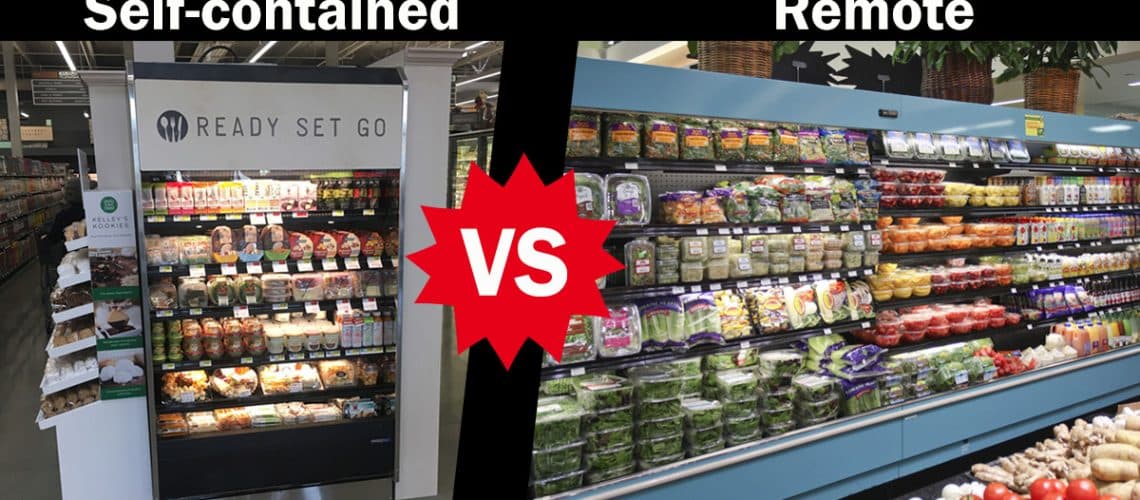Self-contained vs. Remote Display Case — Which One Suits Your Business Best?

For grocery stores and supermarkets, refrigerated display cases are critical assets for everyday operations. When looking for a display case for food retail stores, choosing the right equipment that caters to retailers’ needs, like size, functionality, and installation requirements, is essential.
Because retailers have different purposes for getting a food retail display case, their checklist of needs must be fulfilled when deciding which specific merchandiser to get. When it comes to refrigerated display cases, self-contained and remote are the two basic types of cases that are commonly used in the industry today; and this can cause a dilemma for retailers as to which one to choose that will best fulfill their needs.
Self-contained or remote display case? Here are the pros and cons to help you make the right decision.
Self-contained Display Case
Self-contained display cases refer to refrigerated display case equipment that houses all its functional components, like compressor, condenser, and evaporator, inside the display case itself. Because of this feature, it offers advantages to food retailers, like lower up-front cost and easier setup and installation, practically making it plug-and-play and ready for use upon purchase. Likewise, when it comes to fitting and relocating the case inside the store, it can easily be moved since there is no need to connect to external piping from a remote refrigeration system source. Aside from the availability of electrical power, there is no store modification needed, regardless of where the self-contained case is placed.
However, the same features that the self-contained case possesses that offer advantages to food retailers also come with drawbacks. Because of its self-contained nature, the refrigeration process happens inside the unit, which would release the resultant heat back inside the store. This would mean higher store air-conditioning usage to compensate for the additional heat. Also, depending on the type of self-contained case, it can create a level of noise due to the compressor operating inside the case. Lastly, retailers need to be careful about cross merchandising around the base of a self-contained case so that they don’t block the air discharge and return. Blocking these vents on the base of the case could result in a service call as there could be a potential for the case to not work properly.
Remote Display Case
Unlike the self-contained display case, the remote type doesn’t have all the refrigeration components residing inside the unit but instead uses an external condensing unit that can be installed outside the store and out of the customer’s sight. By placing the condensing unit outdoors, the inherent heat and noise of the self-contained case are avoided inside the store. Also, when it comes to capacity, remote cases tend to offer more space for product placement than self-contained since components are not built-in, making more real estate available for increased product facing and pack-out.
However, a remote display case doesn’t come without its disadvantages. This type of case can’t be used immediately upon purchase since it requires proper technical and mechanical installation (piping, connection to refrigeration system source, etc.) and is not therefore flexible in terms of relocation in the store. Also, remote display cases tend to have higher initial cost since there are other additional components and installation effort needed before it becomes fully operational.
Whether self-contained or remote, these two types of cases are highly functional and will be greatly useful as merchandising tools. However, when retailers are faced with the challenge of choosing only one, it will all boil down to the retailer’s preference, budget, and needs. Ultimately, retailers must see to it that they purchase from a reliable refrigerated display case provider to get the best value out of their investment.